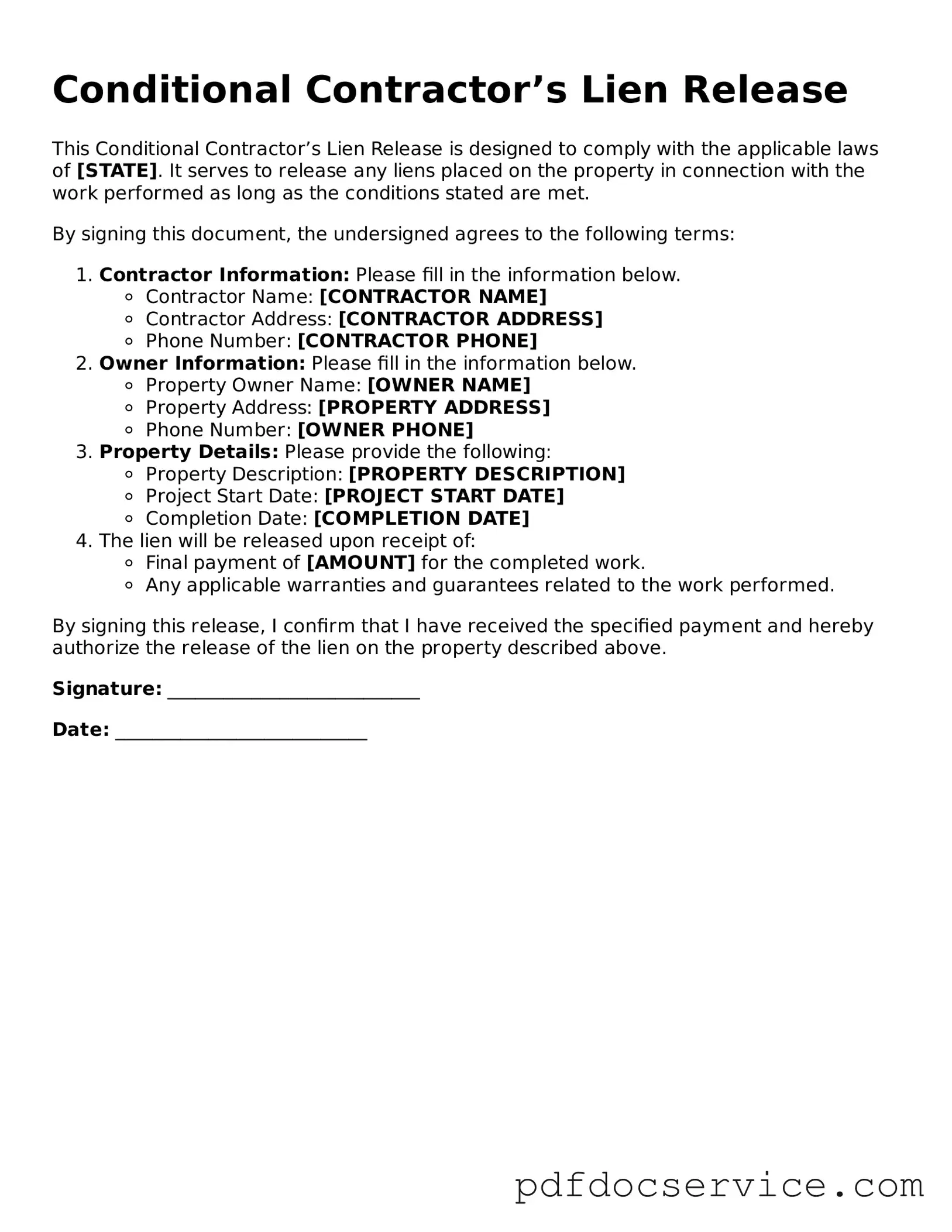A Conditional Contractor’s Lien Release form is a legal document used in the construction industry. It allows a contractor or subcontractor to release their claim or lien on a property conditionally. This means that the release is valid only when certain conditions are met, such as the receipt of payment for work completed. This form helps protect both the contractor's rights and the property owner's interests.
This form should be used when a contractor or subcontractor has completed work on a property but has not yet received payment. By using this form, they can assure the property owner that they will release their lien on the property once payment is made. It's commonly used in situations where a project is ongoing, and payments are made in stages.
To fill out a Conditional Contractor’s Lien Release form, you will need to provide several key pieces of information, including:
-
The name and contact information of the contractor or subcontractor.
-
The name and contact information of the property owner.
-
A description of the work performed.
-
The amount of payment expected.
-
The date by which payment should be made.
Ensure that all details are accurate to avoid any disputes later on.
Yes, once signed by both parties, the Conditional Contractor’s Lien Release form is legally binding. This means that the contractor agrees to release their lien on the property, provided the specified conditions are met. However, if the conditions are not fulfilled, the lien may still be enforceable. It’s important to understand the terms outlined in the form before signing.
If payment is not made after signing the Conditional Contractor’s Lien Release form, the contractor retains the right to enforce the lien. This means they can take legal action to recover the amount owed. It's crucial for both parties to communicate openly about payment timelines to avoid misunderstandings and potential legal issues.
